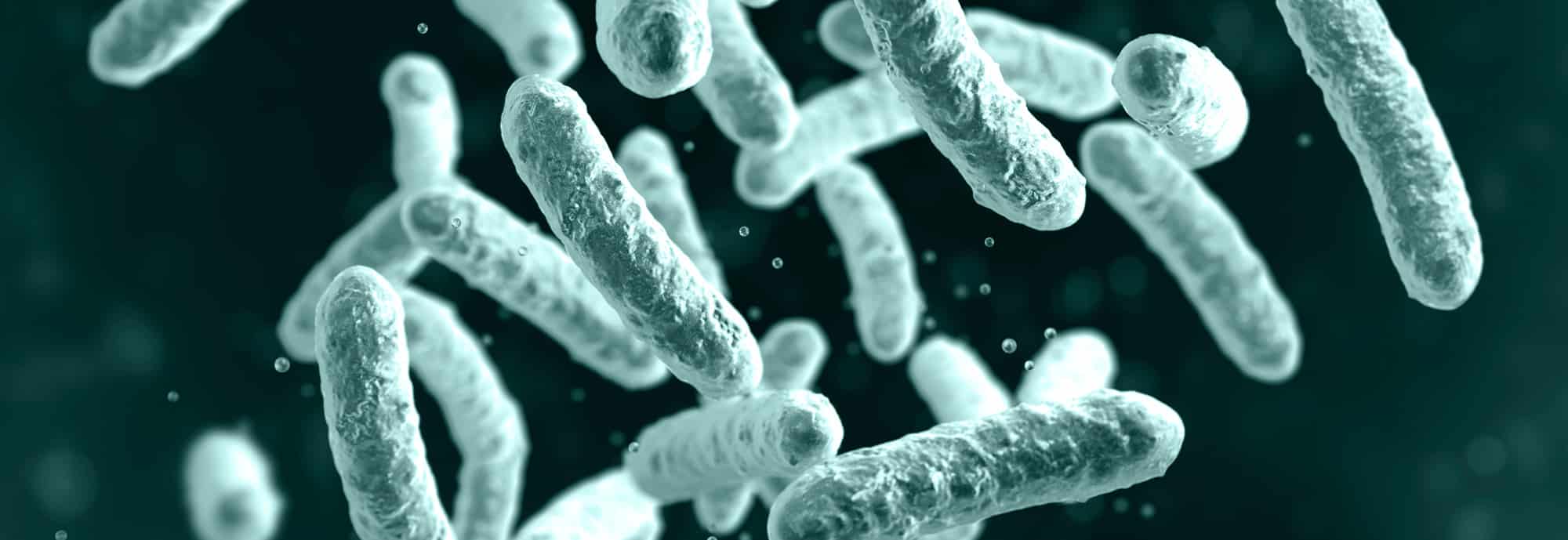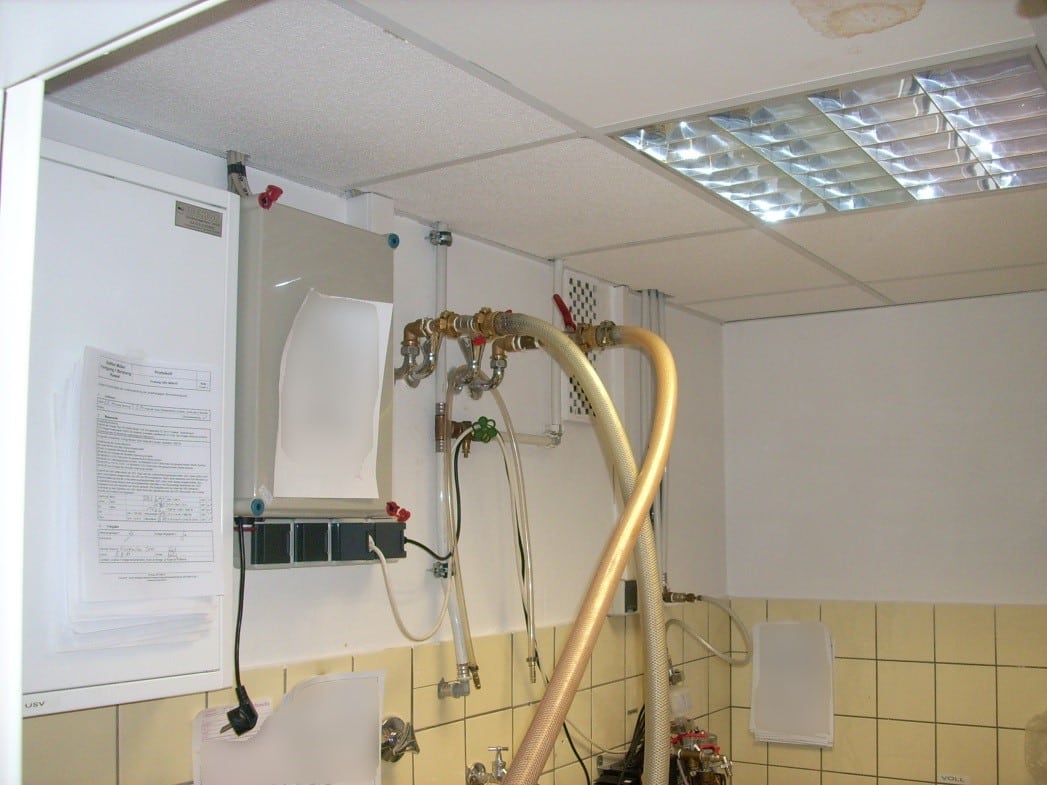Microbiological contamination can occur in drinking water pipes. The causes are structural, operational or procedural deficiencies. Pseudomonads, especially Pseudomonas aeruginosa, are rod-shaped bacteria. They can be dangerous for people with weakened immune systems. They are a dreaded hospital germ with antibiotic resistance. Therefore, quick action is required in the event of contamination.
Germ formation in drinking water installations
Interesting facts about pseudomonads
Pseudomonas aeruginosa is a widespread soil and water pathogen. Pseudomonads can cause a variety of diseases, including pneumonia – which is associated with a high mortality rate. The pathogen naturally possesses multiple resistances to antibiotics and is one of the most common hospital germs. The germ can be particularly dangerous for people with a weakened immune system.
Pseudomonads, unlike Legionella, are not only transmitted via aerosols, but can also be transmitted through contact with contaminated surfaces as well as directly from person to person. Contaminated water is an important factor here.
“P. aeruginosa is characterized by properties such as low nutrient requirements, growth over a wide temperature range, and the ability to form biofilms, and is capable of surviving and reproducing in both water-bearing systems and distilled water.”(Federal Environment Agency recommendation)
“Entry into the drinking water system can occur via contaminated materials during construction work on the pipe network or during work on existing or newly installed drinking water installations [6]. As a result of entry, colonization of various material classes such as stainless steel, plastics, soft PVC or sealing materials is possible, whereby new materials without an existing biofilm are more heavily colonized than surfaces with an existing drinking water biofilm. A multiplication is only possible if a nutrient source is present, e.g. on the surface of materials without suitability according to DVGW W 270 [7, 8].”(Recommendation of the Federal Environment Agency)
Sources of contamination in drinking water installations can be improper construction work or repairs.
According to the generally recognized rules of technology, the cold water temperature is below 25 °C when operated as intended, i.e. with regular water withdrawal.
Problems occur
- if cold water is too warm at over 25 °C – the temperature should ideally be below 20 °C
- if the thermal insulation of the pipework is inadequate – e.g. if the cold and hot water supply pipes are too close together or too close to the heating pipework
- in the event of improper operation without regular water withdrawal
Disinfection serves to kill and thus inactivate undesirable microorganisms. A distinction must be made between plant disinfection and drinking water disinfection.
- During system disinfection, the drinking water installation is taken out of service. A distinction is made between chemical and thermal disinfection.
- Only substances on the list according to §11 of the Drinking Water Ordinance may be used for drinking water disinfection. The list specifies purity and maximum concentration of these substances. They are continuously dosed into the drinking water.
Cleaning is used to remove impurities by means of processes using water with and without additives (e.g. air or solids). A distinction must be made between new installations, repairs and existing installations.
- In the case of new installations and repairs, assembly aids and unavoidable impurities must be discharged.
- In existing plants, deposits and biofilms form over time. They consist of organic or inorganic substances. If these affect the quality of the drinking water or the function of the system, cleaning is required.
“For chemical disinfection, disinfectants such as sodium hypochlorite, chlorine dioxide and hydrogen peroxide are used. The application concentrations for disinfection of the system are significantly higher than the concentrations permitted for disinfection of drinking water according to the Drinking Water Ordinance. The required reaction times or exposure times can be up to 24 hours.
An effective concentration of disinfectant shall be demonstrated and documented at each sampling point.” After disinfection is complete, the system must be flushed with potable water until the disinfectant is completely removed.
(Source: according to twin No. 05, as of April 2009)
There are static and dynamic methods for chemical disinfection. Stand disinfection has several disadvantages. In the course of the exposure time, a reaction with the substances present in the pipeline, for example in the case of impurities, leads to a constant decrease in the disinfectant concentration (depletion). The effectiveness of stand disinfection is therefore increasingly diminishing. In the case of pronounced deposits or biofilms, the disinfection has only a superficial effect. Retreat spaces and nesting possibilities of microorganisms remain despite disinfection.
“In addition, since disinfectants are strongly oxidizing substances, damage to the materials used in drinking water installations (metals, plastics and elastomers) can occur under unfavorable circumstances even after a single application.”
(Source: twin No. 05, as of April 2009)
Suspended impurities or impurities dissolved in the water can be flushed out of the drinking water installation without major difficulties. The insoluble deposits and biofilms adhering to the inner surface are problematic.
Intensive mechanical cleaning is therefore required to remove these impurities. Disinfection can be a complementary measure.
It is necessary to remove the particles or corrosion products by rinsing or other cleaning measures, since the disinfection almost does not reach the microorganisms embedded in them.
In any case, the most important measure to eliminate contamination is cleaning.
The Comprex® pulse rinsing process is an effective cleaning measure for pseudomonas contamination.
The Comprex® impulse flushing process cleans intensively using only compressed air and water. It is used for solid deposits and incrustations as well as microbial contamination. As experts in mechanical cleaning, we have been applying our Comprex® process to pipes and systems since 1997 and to drinking water installations since 2005.
Operators often report that they search a long time for an effective solution when contamination occurs. Cleaning is only considered after various measures have been unsuccessful. Mechanical cleaning of drinking water installations is established and, according to DVGW Code of Practice W 557, the first step in eliminating contamination.






